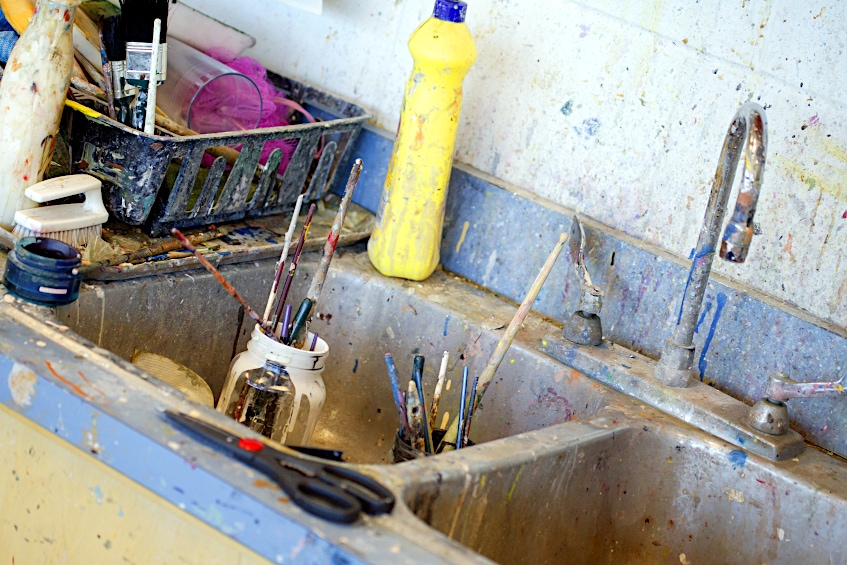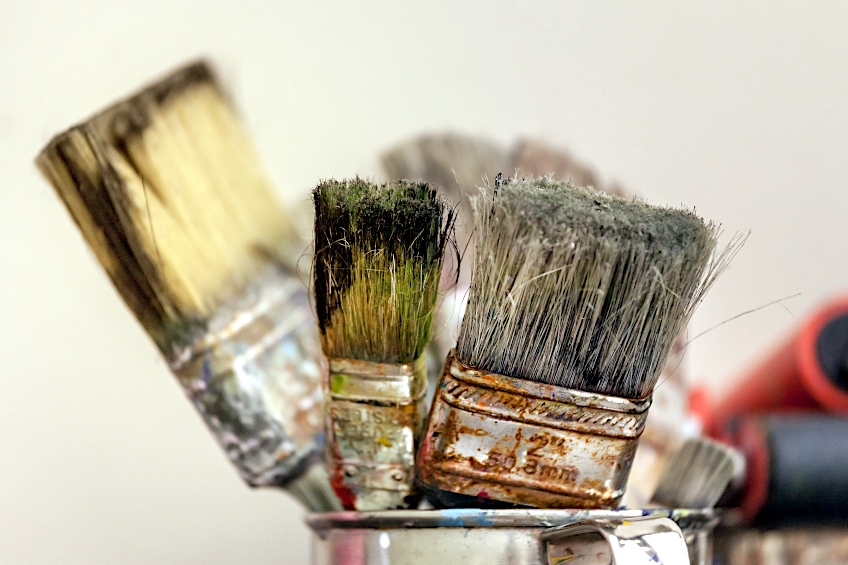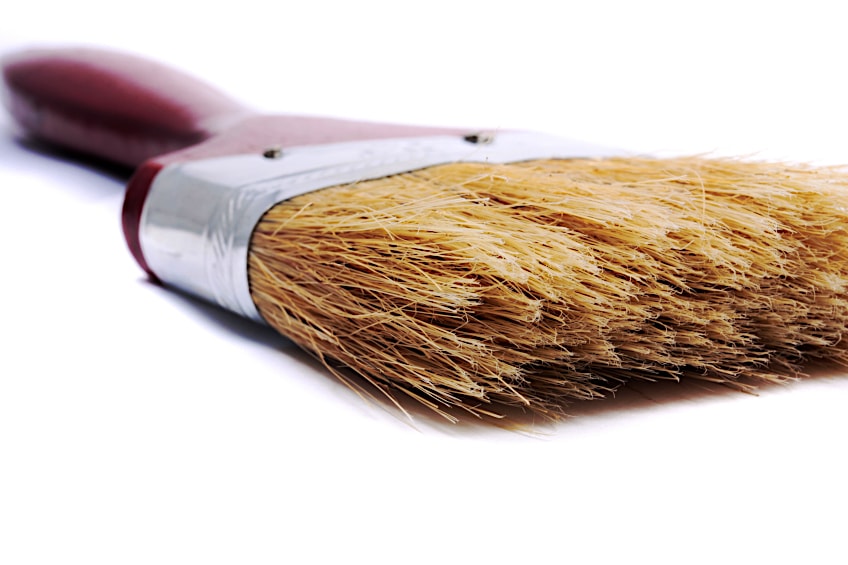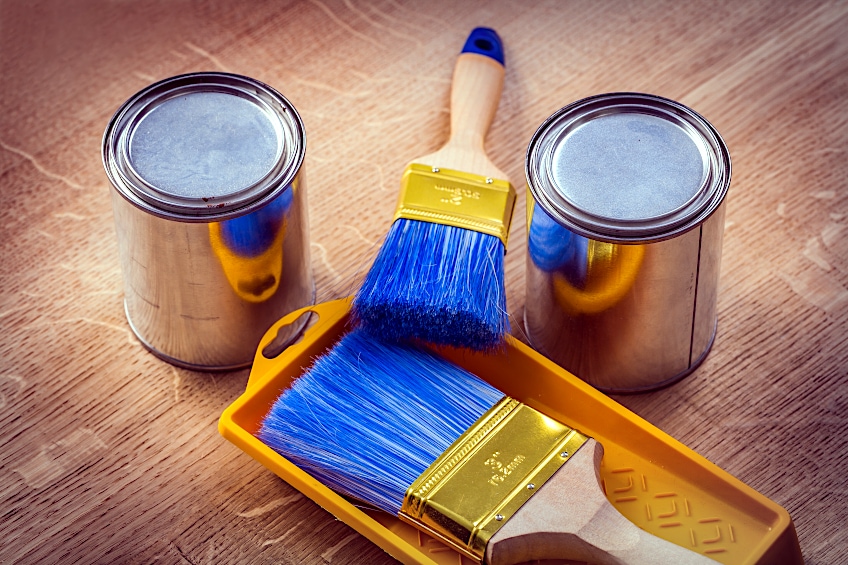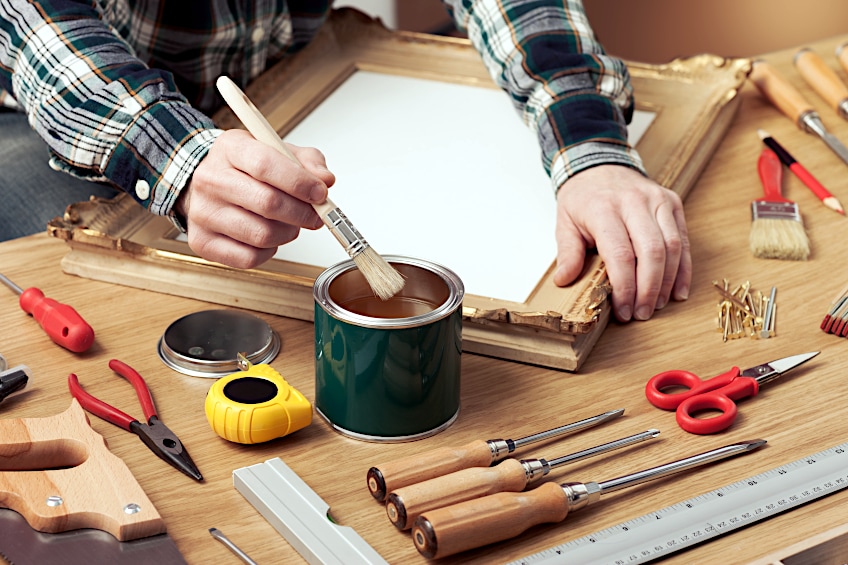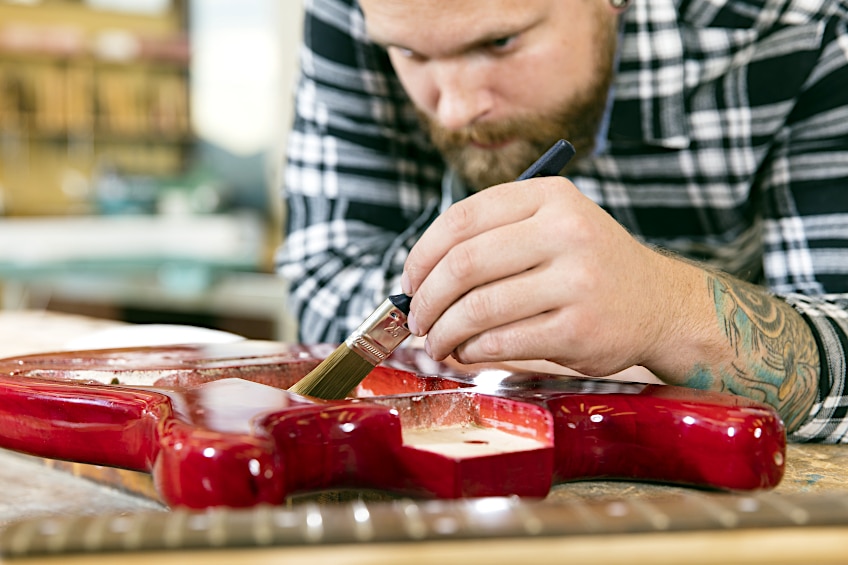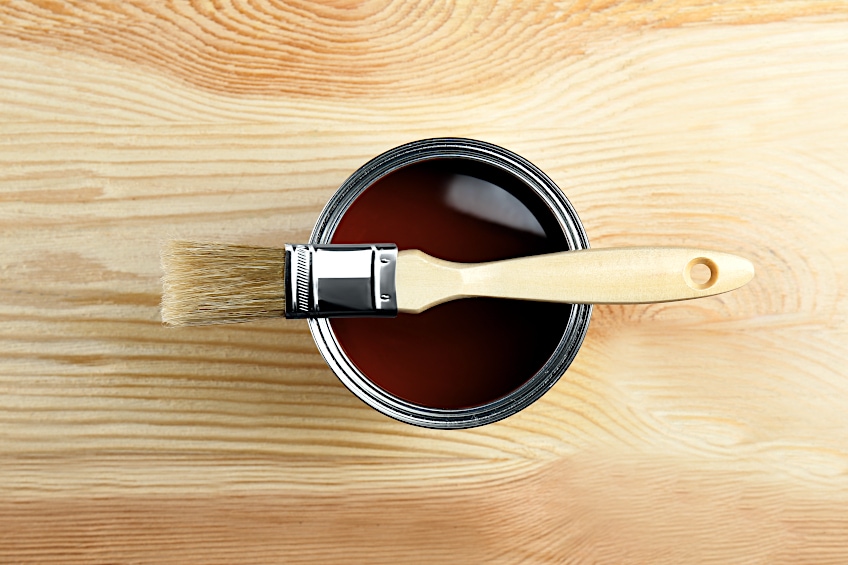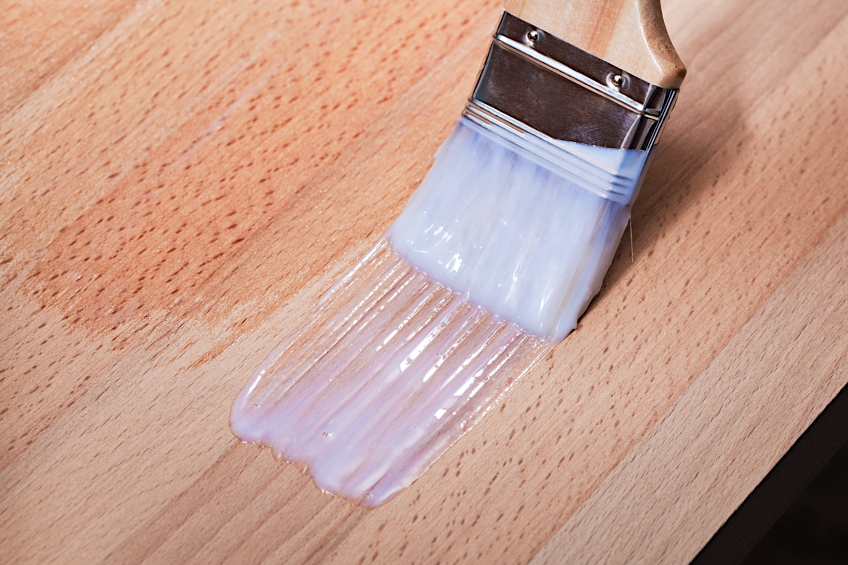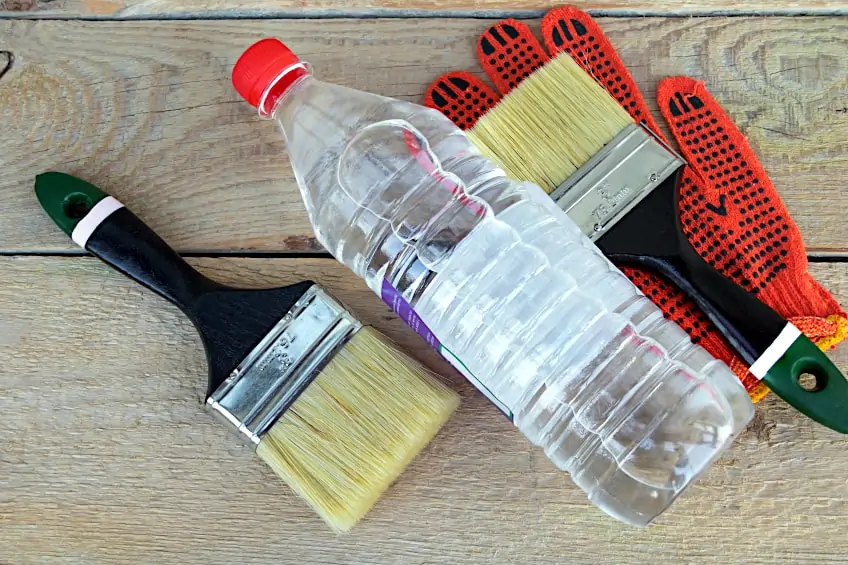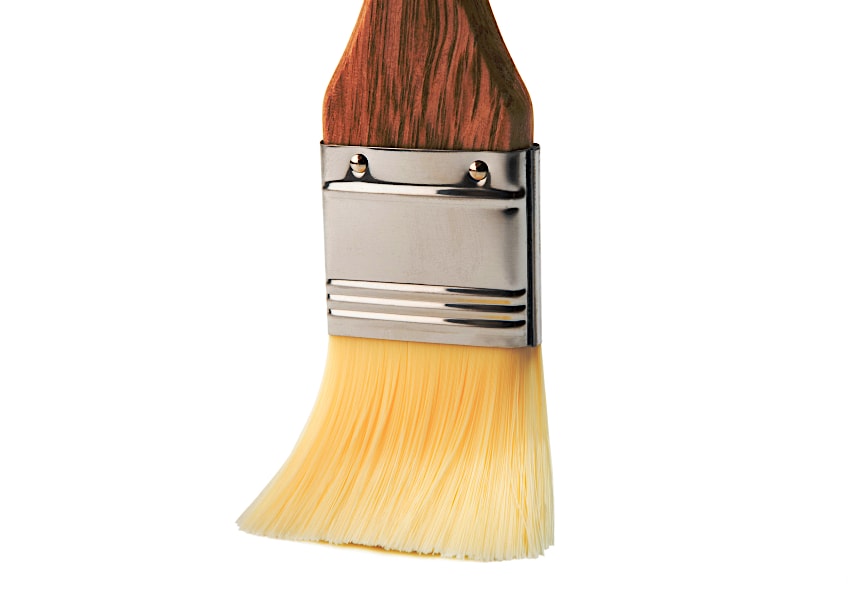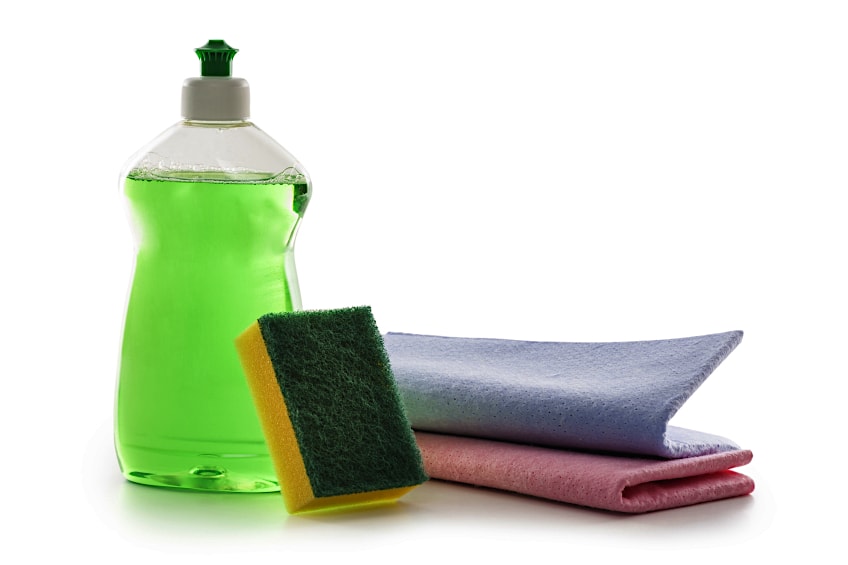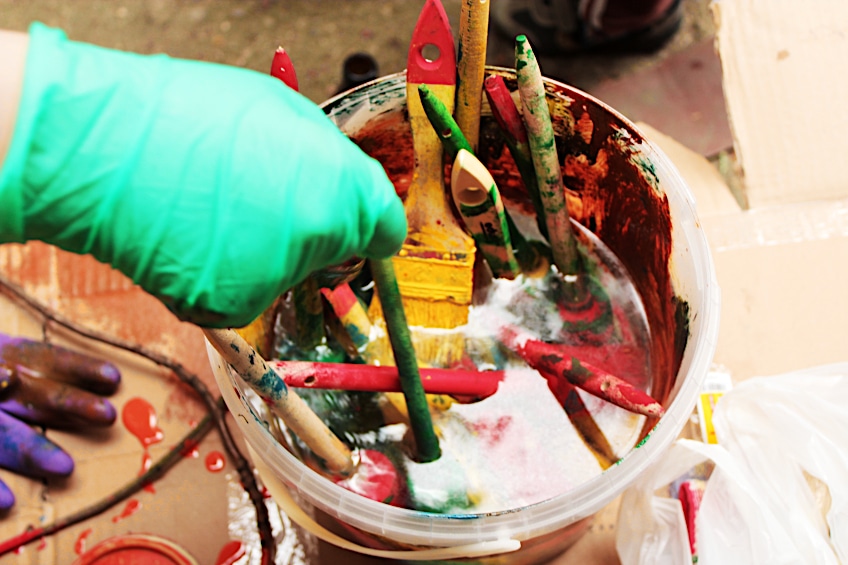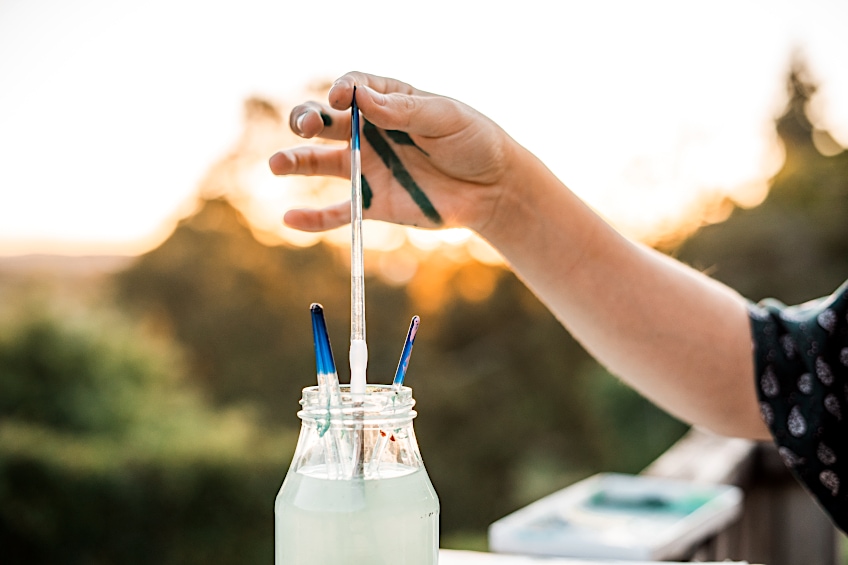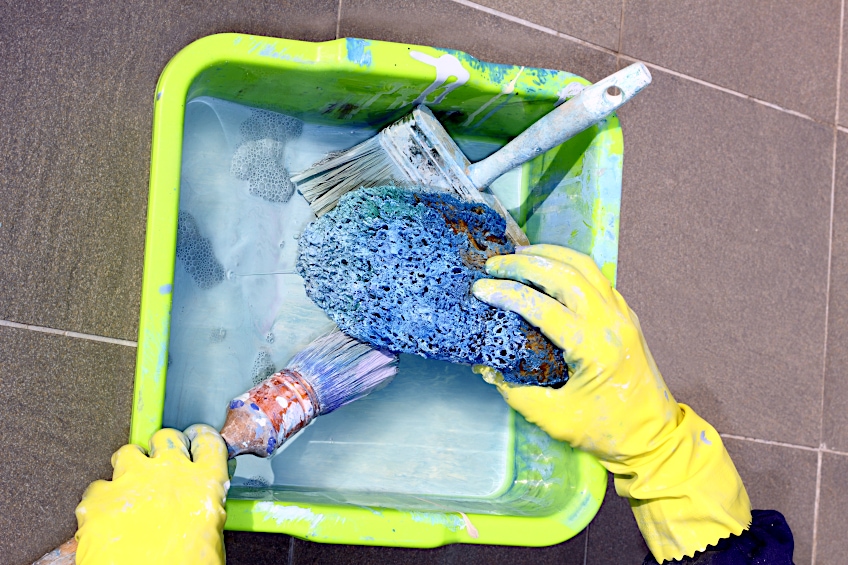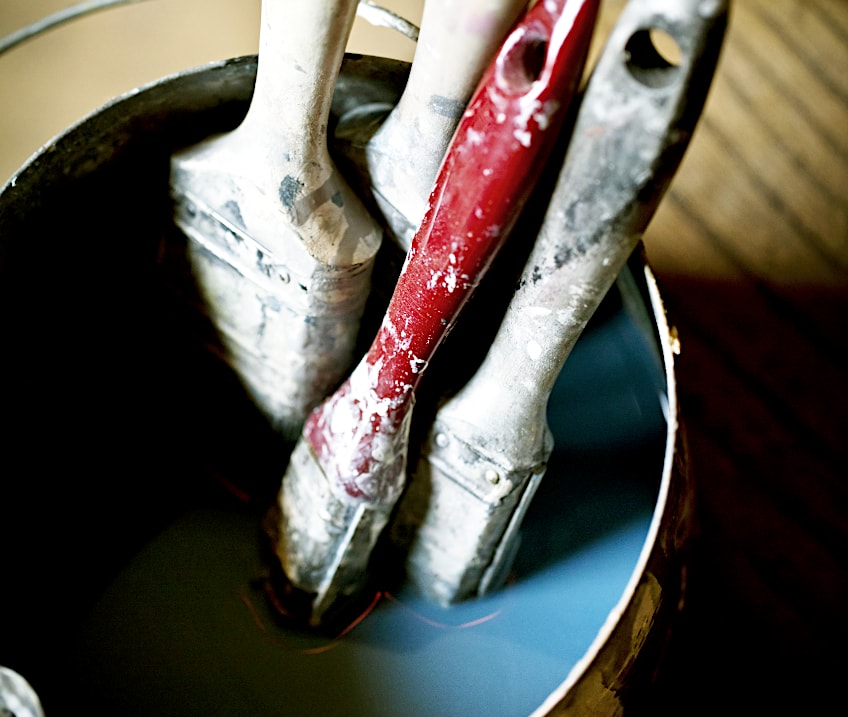How to Clean Polyurethane Brushes – Make Your Brushes Last
This post may contain affiliate links. We may earn a small commission from purchases made through them, at no additional cost to you. You help to support resin-expert.com
Cleaning up is nobody’s favorite chore, but like brushing your teeth or taking out the trash, it’s something that pretty much has to be done if you wish to continue to function effectively. Cleaning your tools can be a drag, whether it be cleaning out the blades of your power saw, cleaning out the hopper of your paint sprayer, or simply maintaining your power tools, it can seem like a chore. One of the most overlooked maintenance processes in the crafting industry is cleaning out brushes, whether they’re covered in paint or polyurethane. Polyurethane in particular can be a challenging substance to remove, but it’s always necessary to have it cleaned out. Why, though? Let’s have a look at why it’s always a good idea to clean out your polyurethane brushes and what the best way to go about it is.
Table of Contents
Why Is It Difficult to Remove Polyurethane from Paint Brushes?
Polyurethane coatings have a variety of uses, they can be used in the adhesive form, as a clear coat, as a protective layer, or even used to create resin crafts. This is arguably one of the most versatile materials on the face of the planet, being used in seemingly every industry in existence, polyurethane is considered by many to be a sort of miracle material compared to others that came before it.
Although it is versatile, effective, and long-lasting, polyurethane coatings can be challenging to clean up. Why? Well, once polyurethane has had a chance to dry and cure on a given surface it develops a bond with the fibers of the object which can be incredibly challenging to dissolve.
This being said, it will always be in your best interest to remove polyurethane while it’s still in its wet form, especially if you have used a paintbrush to apply your polyurethane coating. If you’d like to know why polyurethane tends to stick between and on the bristles of any paintbrush you use, and once it cures it can become virtually impossible to remove.
Crafters will often simply dispose of these paintbrushes because of how time-consuming it can be to remove polyurethane from the bristles. But, if you can make a habit of removing the polyurethane from the bristles as soon as you are done applying your coating you will still have your trusty brush, none of the frustration, and save yourself a fortune in the long run.
The level of difficulty you’ll encounter also depends on which type of polyurethane coating you choose to use on your workpiece, using a water-based polyurethane coating will be significantly easier as simply dipping your brush in water will dissolve the polyurethane base, but using an oil-based polyurethane coating may result in increased difficulty in the removal process.
What this all boils down to is that it is best to condition yourself to clean your brushes as soon as you’re done using them. This might sound simple it can be quite the internal battle. We’re all human at the end of the day (we hope), and after a long day of painting and/or sealing a workpiece, it can seem like the most herculean of tasks to clean our tools, even though it’s for our own benefit.
Are There Different Types of Polyurethane?
To most of us, polyurethane is just a coating that can be used to seal and protect our workpieces, but there are subtle differences in the two types of polyurethane that are available for both private and commercial use. The two variations of polyurethane coatings are oil-based polyurethane and oil-based polyurethane respectively. These substances are used for different applications and have different strengths and weaknesses, but they still serve the same purpose ultimately. Let’s have a look at some of the differences and key attributes of oil-based and water-based polyurethane coatings.
Oil-Based Polyurethane Coatings
As the name suggests, oil-based polyurethane has an oil base, this oil can consist of natural or synthetic oil types, but they tend to have the same characteristics regardless of which is used. Oil-based polyurethane is distinguishable from water-based polyurethane by its golden brown color, it is also much more challenging to remove from a given surface compared to water-based polyurethane products.
Oil-based polyurethane is also far more durable compared to its water-based counterparts due to the way that it bonds and penetrates with a given surface. This is best illustrated when oil-based polyurethane coatings are applied to wooden workpieces, seeing as how the polyurethane protects the surface and inner wood fibers from damage which could be caused by excessive exposure to heat, moisture, impact, abrasion, and even insect infestation.
Although oil-based polyurethane coatings tend to be a bit more robust, they have a significantly longer drying time compared to water-based ones, taking a full 24 hours to set and cure before the workpiece is clear for use. Oil-based polyurethane (a lot like oil-based paints) emits a strong, district odor which can be hazardous if they aren’t kept and/or applied in a well—ventilated area.
Oil-based coatings require fewer coats when being applied to a surface because they are thicker in viscosity compared to water-based ones, but they can cost a bit more on average depending on which brand you have chosen to go with and where you choose to purchase your wood treatment products.
Water-Based Polyurethane Coatings
Water-based polyurethane coatings are usually seen as newcomers in the crafting industry. For the longest time, it seemed that oil-based polyurethane coatings were the only option when the topic of wood protection was brought up. Thankfully, we now have a choice between the two, and this is in no small part due to society as a whole becoming more environmentally conscious.
What does this have to do with water-based polyurethane you ask? Well, we mentioned previously that oil-based polyurethane contains some chemicals that require it to be applied and stored in well-ventilated areas, these substances are known as volatile organic chemicals or VOCs.
While oil-based polyurethane coatings do contain quite a bit of these chemicals, water-based coatings contain significantly less of them, and therefore their production and usage are viewed much more favorably compared to oil-based ones.
Other than being better for the environment, water-based polyurethane coatings dry much faster than oil-based ones (within four to six hours compared to a full 24 hours with oil-based paints) and they produce less of an odor compared to oil-based coatings.
Besides their faster dry time and reduced environmental impact, water-based polyurethane coatings are clear in appearance, which makes the two coatings pretty hard to confuse, and what’s more, is that water-based polyurethane coatings can be cleaned up and/or removed with some water and cloth! Although water-based polyurethane used to be a bit cheaper than oil-based ones, they are typically slightly more expensive these days due to the supply and demand of these coatings.
How to Clean Polyurethane Brushes Effectively
Wondering how to clean polyurethane brushes? Now that you know why it’s important to clean your tools once you’ve used them to apply polyurethane and the different kinds of polyurethane that are out there, we should probably show you how to clean your tools. Oil-based and water-based polyurethane coatings require different cleaning methods, so let’s have a look at how to clean polyurethane brushes effectively.
How to Clean Oil-Based Polyurethane Brushes
Cleaning anything oil-based off a workpiece of a given surface does require some elbow grease due to the inherent nature of the substance, but with some patience and a little bit of guidance, you’ll be on your way to a clean brush that’s ready for use at a moment’s notice. Here you will find a short tutorial detailing how to clean oil-based polyurethane brushes as well as some of the things you will need along the way.
- A small cup
- Some paint thinner
- Running water (preferably hot)
- A clean cloth
- A face mask (fabric or otherwise)
- A well-ventilated workspace
- Gloves graded for use with polymers
- A microfiber brush
- Dish soap
Now that you know what you need it’s time to get started. Fill your small cup (which should be around the size of the brush) with some of the paint thinners you gathered. Be careful not to fill the cup all the way to the brim, this is to account for the displacement of the thinner once you pop your brush into the cup.
Next, pop your brush into the cup and allow it to soak for a little while. If your brush was hard when you put it in, the paint thinner should allow you to bend the brush in the cup after a few minutes. Once this is possible, bend the brush in the cup, allowing the bristles to flex back and forth and little bubbles to appear on them.
This is a good indication that the paint thinner has begun breaking down the polyurethane’s bond with the bristles. Be careful not to spill any paint thinner on yourself or your work surface as it can be challenging to neutralize both its odor and the corrosive effects of the thinner. Once your paint thinner turns clear, it has been saturated with the polyurethane that was in the brush’s bristles, which means you can finally remove the brush from the cup.
Once you have your brush removed from the cup it’s time to get it under some running (preferably warm) water. Once you have wet your brush, add some dish soap to the bristles of the brush and use your gloved hands to work the soap into the bristles of the brush. Pop the brush back under the running water and rub it against your hand, if it begins to soap up you know you’ve done a good job!
Keep rinsing the bristles of the brush under running water until you see absolutely no soap left on them at all. Once your brush is soap-free, have a close look at the bristles and check that they are indeed polyurethane-free. Once you’re sure, the microfiber brush to dry the polyurethane brush off until it is no longer moist. That’s pretty much it, ensure that this process is repeated as soon as possible each time you use your brush to apply polyurethane.
How to Clean Water-Based Polyurethane Brushes
If you’re wondering how to get polyurethane off brushes drenched in water-based polyurethane, we have what you’re looking for. This is a far easier question to answer compared to “how to get polyurethane off brushes used with oil-based polyurethane” but it still requires some patience and some know-how. Here is the best way to clean polyurethane brushes used with water-based polyurethane, as well as some things you will need along the way.
- A small cup
- Some water
- A source of running water
- Gloves graded for use with polymers
- A face mask (fabric or otherwise)
- A well-ventilated workspace
- A clean cloth
The cool thing about water-based polyurethane is that when you clean polyurethane brushes used with it, you have the luxury of simply using water to get the job done. Where oil-based polyurethane requires solvents to release the bristles from the grip of polyurethane, water-based ones simply bind with the water introduced to them, upsetting the chemical balance of the bond it has formed with the brush, which releases the bristles.
This process can get a bit repetitive so do your best to remain as patient as possible. Fill the little cup with water and pop-your brush into it, allow the brush to soak for a few minutes before removing it and throwing the water in the cup out, and replacing it with some fresh water. Repeat this process about five or six times until the water is no longer murky when the brush has been removed.
Once you are sure that most of the polyurethane has been dissolved by the soaking methods, remove the brush from the little cup and make your way over to the sink and get some water running. You can use warm or cold water for this process, but most simply use cold water as it’s less taxing on the bristles of the brush.
Allow the water to run over the bristles and use your gloved hand to squeeze or any residual polyurethane left inside the bristles. Remember that even though this type of polyurethane is water-soluble you should do your best not to let any come into contact with your eyes or skin. When it comes to water-based polyurethane, water truly is the best polyurethane brush cleaner. Once your bristles are clean you are good to go!
How to Store a Polyurethane Brush Between Coats
Now that you know that the best polyurethane brush cleaner is for each respective type of polyurethane, you should know how to store polyurethane brush between coats It’s not all too complicated, so let’s have a look at the best way to go about it. If you are going on a short break while you are working the best way to store your brush until you get back is to leave it in the polyurethane solution.
Be sure not to leave the entire brush in there, just about a third of the bristles should be submerged for the time you’re away, this works for about a 15-minute break after which when you return your bush and polyurethane should all still be in good working order. If you are taking a longer break you definitely should not leave your brush exposed to the atmosphere or wrap it in plastic.
The easiest way to ensure that your brush does not dry up or become brittle while you’re away for extended periods of time is simply to wrap it in foil or ensure that you have cleaned it thoroughly and stored it in a cool dry place. Remember that even though it might seem like a monumental task at the moment, you will spend considerably more time trying to save your bush later on if you choose to leave it as is.
Now that you know why it is important to clean your brushes after they have been used to apply polyurethane, which types of polyurethane coatings are on the market, what the difference between oil-based polyurethane coatings and water-based polyurethane coatings is, and the best way to remove each, it’s time for you to get out there and put your newfound knowledge to good use. Remember to always wear the appropriate personal protective gear and to always work in a well-ventilated area whenever possible.
Frequently Asked Questions
How to Clean Stain Brushes Without Paint Thinners?
Wondering how to clean stain brushes without paint thinners? In most instances, the easiest solution (particularly when using water-based stain or polyurethane) is to add soap dish soap to the bristles of the brush and run it under some water. Lather and repeat this process until the bristles are clear of the polyurethane and can be flexed freely.
How to Clean a Paint Brush with Mineral Spirits?
If you find yourself asking how to clean a paintbrush with mineral spirits, it’s really quite simple. Allowing the brush to soak in the mineral spirits until it is able to flex, and then running it under some water while slathering it with dish soap usually gets the job done. Ensure that you wear gloves and use a microfiber brush to dry the polyurethane off your brush before you store or use it again.
Are Mineral Spirits and Brush Cleaner the Same?
When it comes to cleaning off hardened substances from paint brushes the best thing to use is (arguably) paint thinner. Although it basically does the exact same thing as mineral spirits it only costs half the price and considering that they are almost always interchangeable, you are best off with paint thinner over mineral spirits in most applications.


